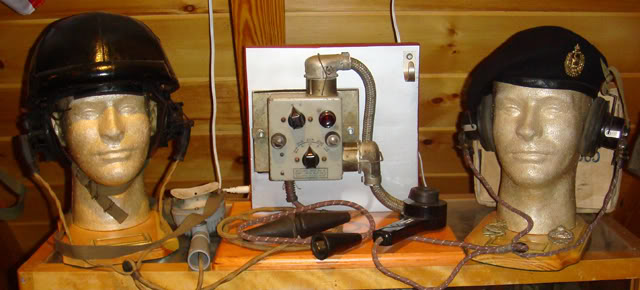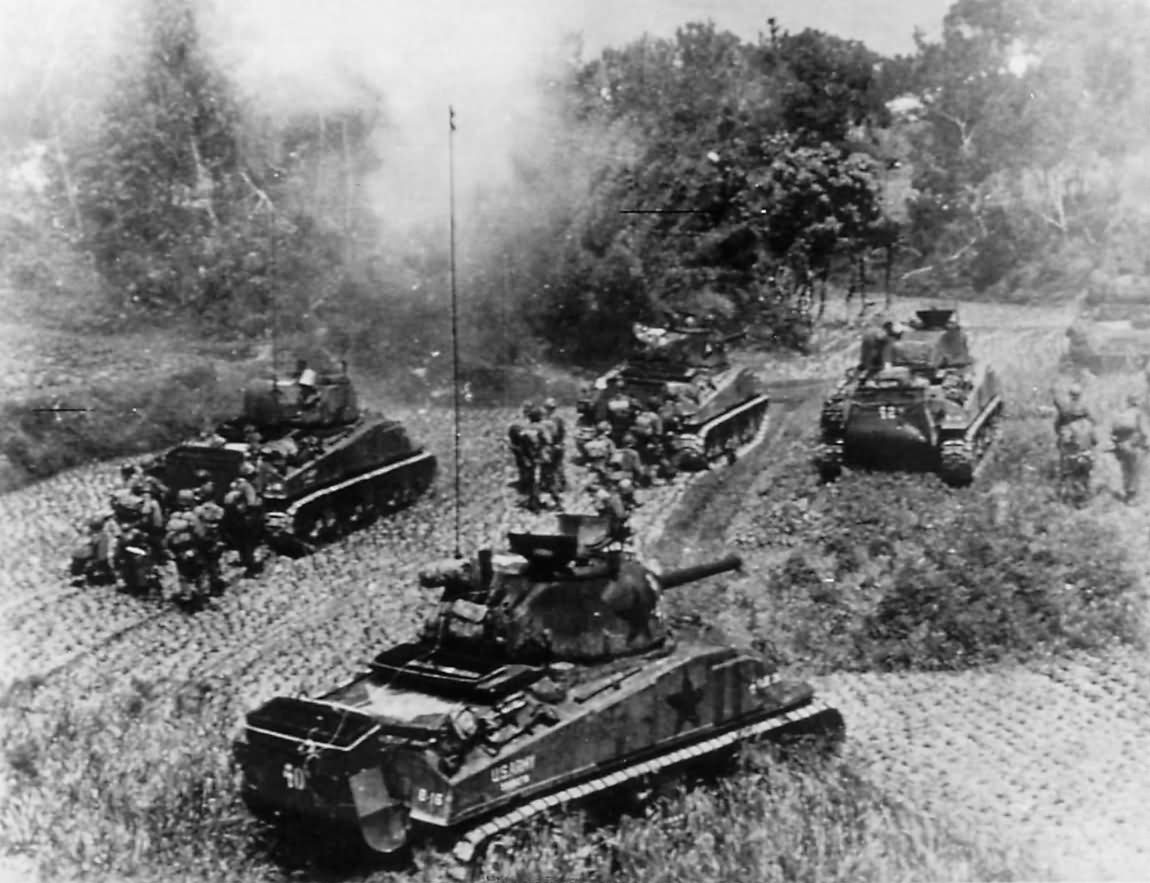The Radios: The M4 Tanks Radios Were Cutting Edge Technology For Their Time, and Better Than German Tank Radios
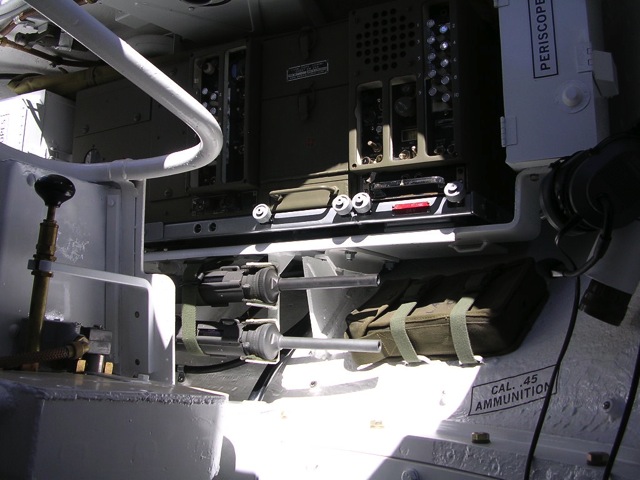
US Army and Marine Radios
The Sherman tank came with an SCR-508, 528, or 538 radio set. Command tanks had an additional SCR 506 mounted in the right front sponson. This lets the tank listen on the net for the HQ they answered to while still talking to his own unit. The main radio set also had the tank intercom built into it. This intercom allowed the crew to talk to each other, but not transmit on the radio, only the tank commander could do that, and as we will see, in a few cases he couldn’t either.

Let’s talk about the radios, now that I know a little more about them. The SCR-508, 528, and 538 were all in the same family. The TM covering these radios was TM 11-600 Radio Sets SCR-508-A, C, D, AM, CM, DM; SCR-528-A, C, D, AM, CM, DM; and AN/VRC-5 and it was very informative on how these radios worked. These radios were all FM band radios, used because FM radios deal with interference from the tank’s electrical system and motor better than AM radios. This did present a problem, in that the only radios the infantry or artillery used that could talk to the tanks were at battalion level since they were using AM Radios at the company level and lower.
SCR-508: This radio had the most options of the three basic radios that could come in a Sherman tank. This radio set included a BC-604 Radio Transmitter, and two BC-603 Radio Receivers mounted on an FT-237 Mounting Tray. This gave the basic Sherman with this radio the ability to transmit on 10 FM channels, and listen on up to 20 if they had the crystals for all the channels. I’ve read a few things here and there that make me think they may have restricted how many frequency crystals could be carried, but that may have been just for the infantry. The BC-604 has a drawer with room for all the crystals for its frequency range. The frequency range was (Mc) 20 to 27.9. This radio transmitter was 25 watts and had a range of 7 miles moving, and 10 to 15 while stopped. It could be powered by 12 or 24v dynamotors. This radio came in at 181 pounds. The tank’s intercom was also controlled through it, and BC-606 Interphone Control Boxes mounted at each crew station. These radios would be found in platoon leaders and company commander’s tanks.
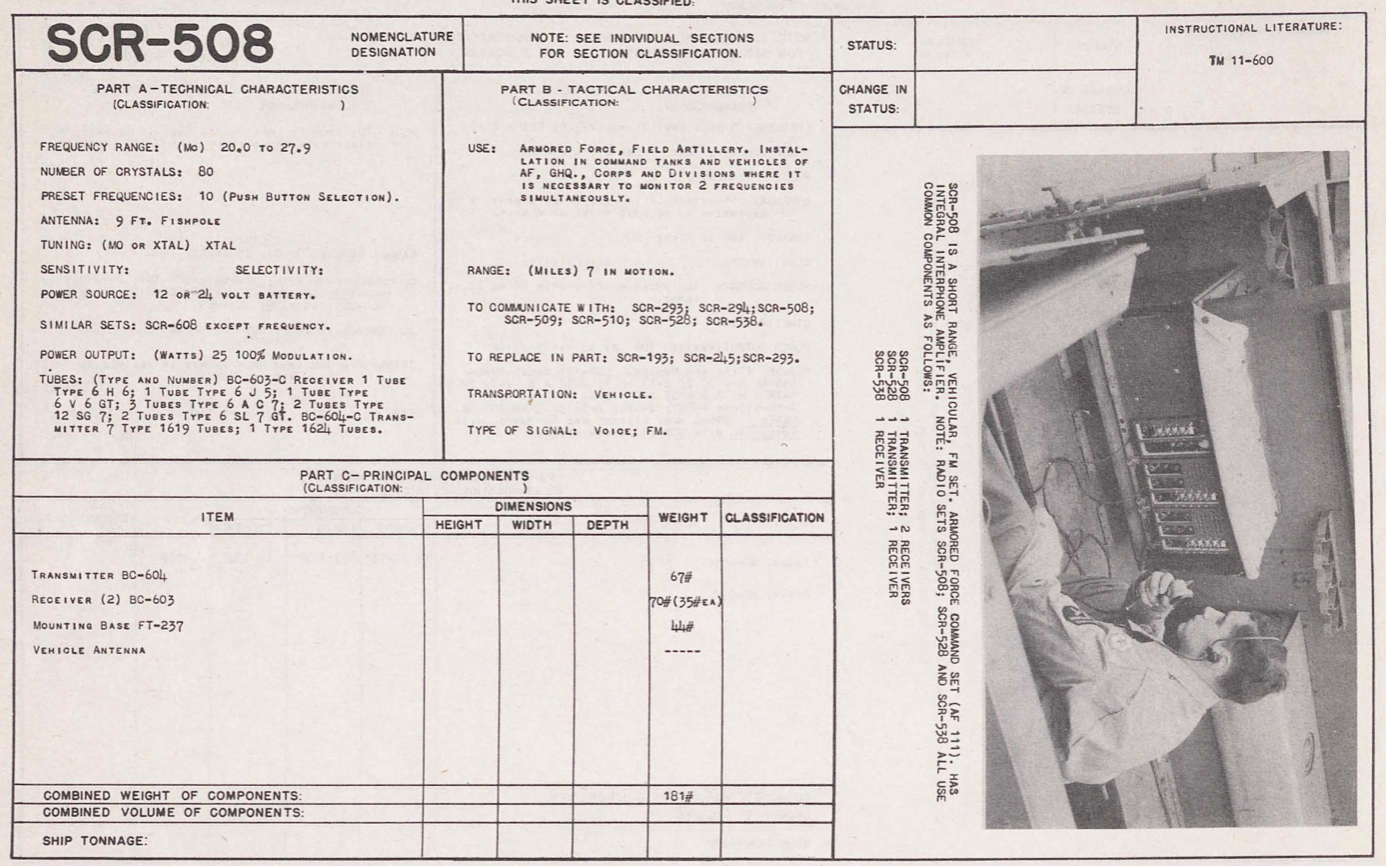
SCR-528: This radio was exactly the same thing as the 508, but with one less BC-603 Receiver. In most cases the spot where the 603 would have been was taken up by a CH-264 Parts Chest. A 508 could be turned into a 538 or the other way very easily. This radio would normally be the radio installed in the standard gun tanks of the platoon and company. This Radio came in at 181 pounds, and the same specifications other than only having one receiver.

SCR-538: This radio would only be installed in tanks when there was a shortage of 508 or 528 at the factory or in a battalion itself. This radio did have one feature that set it aside from the ones above because it lacked a transmitter, it needed a BC-605 Interphone Amp for the crew intercom system. This one came in at only 135 pounds.
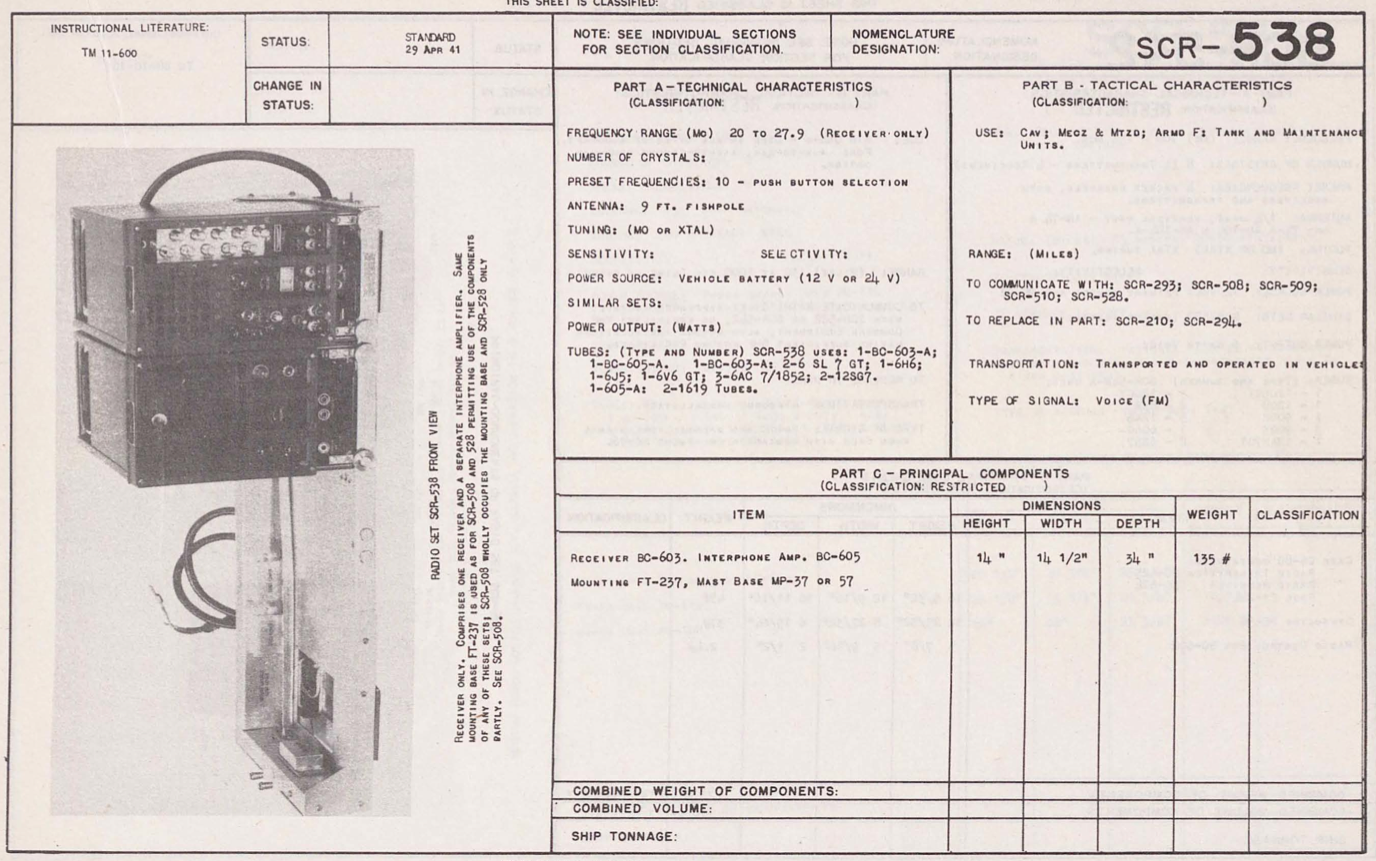
SCR-506: This radio would be the rarest of radios installed in Shermans. This “Command Tank” radio would only be installed in the battalion commander’s tank. On early small hatch Shermans, this radio would have taken up some ammo space in the right sponson near the BOG. In later large hatch wet tanks, they lost some .30 cal storage. It could be operated either on 12 volts or 24 and was designed for vehicle use. It would only be able to talk to Battalion level HQs and higher, and the tanks’ normal radio, probably in most cases an SCR-508, would be used to talk to the tanks in the battalion. This radio could have four preset frequencies, and also an adjustable range from 2-4.5(Mc) transmitting, and 2-6 (Mc) receiving. This radio was hefty and came in at 176 pounds. It was made up of the BC-652 Receiver, BC-653 Transmitter, and the FT-253 Rack Mount.
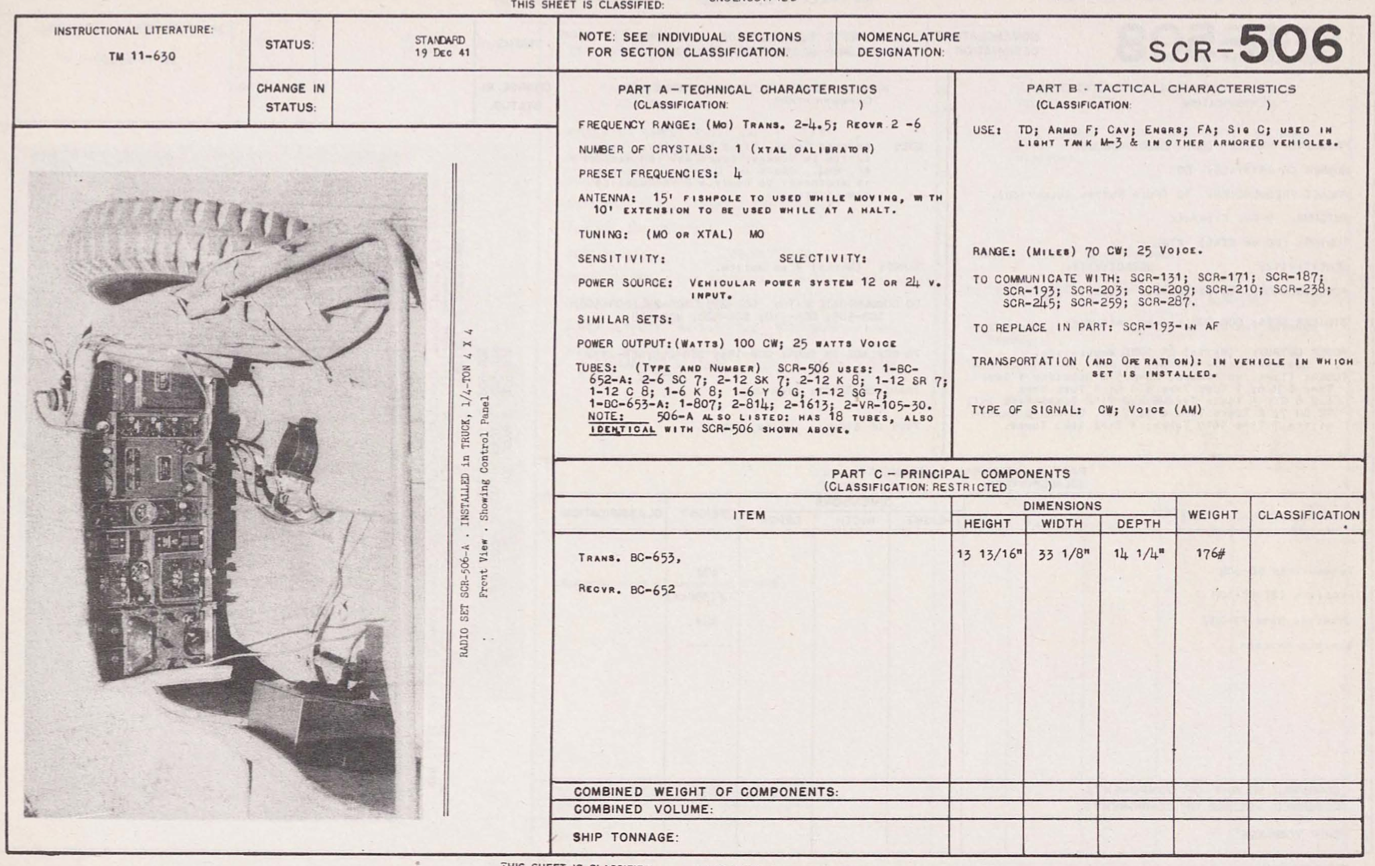
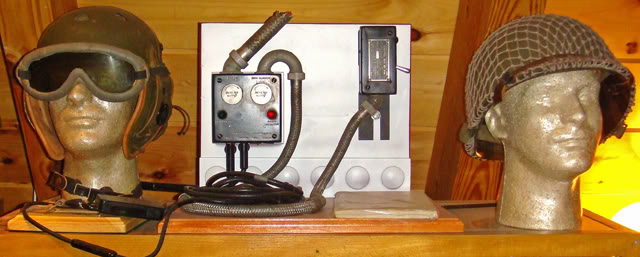
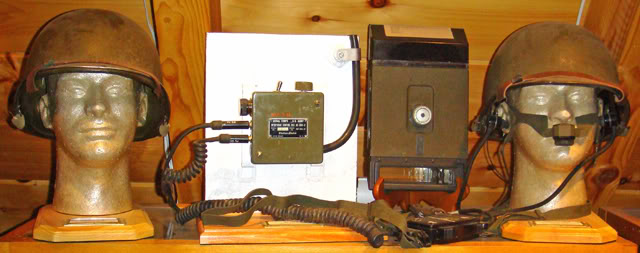
Here’s a Video of an SCR-508 the has been restored in use.
Here’s a Video of an SCR-506 that has been restored in use.
. . .
Destruction of these Radios would be top-priority for the crew if they had to abandon a disabled tank. After watching videos of restored versions of all these radios, I have to say the biggest surprise is all the mechanical noise as they warm-up or transmit. It was also a surprise at how clear the voice was on a 508 in good working order. After reading through the manual for the 508 it is clear, these old radios needed a lot of work to keep them operating. There is a long list of things that have to be inspected, cleaned, and lubricated to keep the thing working. These radios all used tubes, and those tubes, (much like a little lightbulb, if you have no idea what one looks like), also had been removed, and inspected, and cleaned. These tasks would all add to the daily grind of being a tanker and keeping the steel monster working.
Radios used in Commonwealth and Lend Lease Shermans
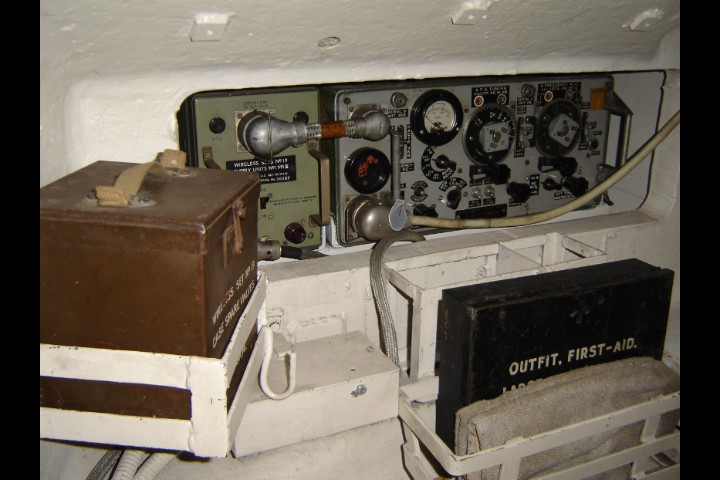
When the British took possession of a Sherman they installed the British Wireless Set Number 19, and it replaced the intercom system as well. It was designed by the British Company Pye Ltd. It was slightly smaller than the US radios. At the level these radios were on, I doubt a British Sherman and an American Sherman could talk to each other. These Radios were made in the USA by RCA and installed in tanks slated for Lend-Lease use.
These Radio sets were both more advanced, and less advanced than their US Counterpart, A true Transceiver, the first, meaning the receiver and transmitter were part of the same unit and shared circuitry. They used UHF for short-range direct view tank to tank communications and the HF portion could transmit up to 50 miles. These radios were not on the same frequency ranges as the US Army, and they were not as suitable for vehicle use. They were cheaper and simpler to build though and they were powerful Transceiver.

The WS19 set had three systems. The A portion was a High-Frequency radio transceiver with a range of up to 50 miles. The B Portion was a Very High-Frequency transceiver for short-range, line of sight communications up to a mile. The final part was an audio amplifier for the crew intercom system. It had control boxes mounted at each crew station just like US tanks.
Photo Source: Mike Roof.
Frequency range:
A set – MkI: 2.5 – 6.25 MegaHertz (MHz), MkII & III: 2 – 8 MHz
B set – 229 – 241MHz
Modulation modes:
A set: Amplitude Modulation (AM) for speech, Continuous Wave (CW)
and Modulated Continuous Wave (MCW) for Morse code transmission.
B-set: AM speech only
Approx Power output: A-set: AM & MCW 1-3 Watts (W); CW 3-5W, B-set: 0.4W
Number of valves: 15 thermionic valves (termed tubes in the USA)
Size/weight: WS19 17.5×8.5×12.5 inches – 40lbs,Power Supply Unit 6×8.5×12.5 inches – 25lbs
Aerial Variometer 10×5 inches cylinder – 5lbs
Power Supply: 12 Volt (V) or 24V lead-acid batteries driving rotary motor-generators,
which provide 275V at 120 milliAmps (mA) for the receiver and 500V at
50mA for the transmitter.
Here’s a video of a Wireless Set Number 19 in use after restoration.
. . .
Sherman Radios in use:
Here is a fascinating transcript of a marine tank company’s radio chatter, taken by a US destroyer offshore during the fighting on Okinawa. You can find this on page 64 of Michael Greens M4 Sherman at War.
“This is Red Two, Red One; heartburn says that he is ready to start shooting at those pillboxes”
“Tell Heartburn I can’t receive him. You will have to relay. Tell him to give us a signal and well spot for him”
“Red Two wilco”
“Heartburn, raise your fire. You’re firing right into us”
“That’s not Heartburn, Red Two, That’s a high-velocity gun from our left rear. I heard it whistle. Red One out.”
“Red Three, this is Red One. Can you see that gun that’s shooting into us?”
“Red One, I think that’s our own gunfire.”
“Goddamnit, it’s not, I tell you. It’s a high-velocity gun and not a howitzer. Investigate or there on your left. But watch out for infantry; they’re right in there somewhere”
“Red Two, tell Heartburn down fifty, left fifty”
“Red Two wilco”
“Red Three, what are you doing? Go southwest!”
“I’m heading southwest Red One.”
“For Christ’s sake, get oriented. I can see you, Red Three. You are heading northwest. Fox Love with hard-left brake. Cross the road and go back up behind that house”
“But”
“I don’t know why I bother with you, Red Three. Yellow One, take charge of Red Three and get him squared away. And get that gun; it’s too close.”
“Red One from Red Two, Heartburn wants to know if we are the front lines”
“Christ yes we’re plenty front right now”
“This is Red Two, artillery on the way”
“Red one wilco”
“Red One from Yellow One. I can see some Japs setting up a machine gun about 100 yards to my right”
“Those are our troops Yellow One, don’t shoot in there”
“The man at my telephone – I think he’s an Officer, – says we have no troops in there.”
“Yellow Two, go over there and investigate. Don’t shoot at them; that man at the telephone probably doesn’t know where the troops are. If they’re Japs, run them over.”
“Yellow One, wilco.”
“Go ahead, Yellow Two. What in God’s name are you waiting for?”
“I’m up as far as I can go and still depress my machine guns.”
“The hell with your machine guns! I told you to run over them! Run over them, Goddamnit; obey your orders!”
“Yellow Two, wilco”
“Yellow One, what have you to report on that machine gun?”
“Red One, a Jap stood up and threw a grenade at us so I gave him a squirt.”
“Did you run over that gun like I told you?”
“No. Red One, we put an HE into it and wrecked it.”
“Christ, won’t you people ever learn to conserve your ammunition…”
“Red One from Green Two, I’m stuck between two trees.”
“Green Three stand by him. After the infantry has cleared up around there, get your assistant driver out and tow him clear.”
“Green Three, wilco”
“While you’re waiting, Green three, keep an eye out on that house on your right. I see troops coming out of there with bottles in their shirts.”
“Can I send my assistant driver over to investigate?”
“Stay in your tank”
“Yellow One, from Red Three, where are you going?”
“Red One from Green Four. I am moving out to take out a pillbox the infantry pointed out I will I will take care of it and let them catch up.”
“Where is it, Green Four?”
“In that clump of bushes to my right.”
“Can you see it? It is all right to fire? Wait Green four”
“Green Four wilco”
“Green Four, you better not fire. The 4th Marines are over there somewhere.”
“Run up on the box and turn around on it”
“It’s one of those coconut log things. It looks like it may be too strong to squash. Is it all right if I fire into the slit?”
“Affirmative, but be careful, wilco”
“Red One, this is Hairless. We’ve got some Japs bottled up in two caves in Target Area Four Baker. We’d like you to leave two tanks to watch them.”
“You know damn well that’s infantry work. We’re a mobile outfit, not watchdogs. Put your saki drinkers in there.”
“Ok Harry, Red One out.”
“All tanks start ‘em up. Move out now. Guide right and form a shallow right echelon. As soon as we hit the flat ground around the airfield, spread out to one hundred and fifty-yard interval. Alright, move out, move out
. . .
The fighting on Okinawa was brutal and they lost a lot of tanks. There were Army and Marine tankers there, all operating Shermans, mostly M4A3s, but a few late model M4A2s were mixed in with the Marines. I thought it was very interesting how much they talked about what they wanted to shoot, and how they had to rely on each other to confirm if a target was friendly or not.
I also thought it was amusing when Green Three asked if he could send his assistant driver to check out the log bunker. I really suspect it was sarcasm. The tankers seemed reluctant to run over the Japanese out in the open. Was it because getting in that close was dangerous, or because cleaning people out of the treads after the fight was really gross? Morbid questions aside, being a tanker in the Pacific had its own share of risks, and took men with a lot of guts, and stamina. Many of the fights took place in very warm locations, and late in the war, colder ones. The Japanese willingness to throw away their lives made being a tanker a dangerous place, but if it followed the same pattern casualties in the ETO did, then being an infantryman was by far the most dangerous thing you could be.
The website www.radionerds.com was a huge help with this post. Not only do they host a lot of info on Radios, but they have the manuals, datasheets, and pictures to go with them. They also have a whole site dedicated to the Army’s amusing PS Magazines. Please check them out!
Sources: Armored Thunderbolt by Zaloga, Sherman by Hunnicutt, Combat Lessons, The Rank and file, what they do and how they are doing it 1-7, and 9. The Radionerds website TM11-67
